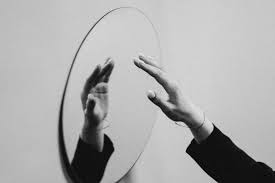Mirrors are ubiquitous in daily life, set up in homes, vehicles, workplaces, and public spaces. They serve practical purposes like particular grooming and safety, and they’ve got cultural and emblematic significance in colorful societies. This composition explores the history, wisdom, art, and different operations of glasses, pressing their impact on mortal civilization and ultramodern technology.
The History of Mirrors
The history of glasses dates back to ancient times when humans first discovered reflective parcels of still water. As technology progressed, glasses evolved from rudimentary polished monuments and essences to the largely reflective glass shells we use momentarily.
1. Ancient Mirrors
The foremost man-made mirrors were polished monuments similar to obsidian, used as far back as 6000 BCE in Anatolia (ultramodern-day Turkey). These early glasses were small and not largely reflective, but they marked the dawn of humans’ seductiveness with their reflection.
2. Citation and Bobby Mirrors
By around 3000 BCE, ancient societies, including the Egyptians, Mesopotamians, and Chinese, began creating glasses from polished citation. These glasses were more reflective and durable, frequently adorned with intricate designs, and used by the nobility for particular grooming and conventional purposes.
3. Glass Mirrors
The first glass glasses appeared in the Roman Empire around the 1st century CE. These early glass glasses were made by sheeting the reverse of the glass with a thin subcaste of the essence, similar to a toad or drum. Still, the quality and reflectivity of these glasses were stilted compared to ultramodern norms.
4. Renaissance Inventions
During the Renaissance, glass-making improved significantly, particularly in Venice, Italy. Venetian glassmakers developed the process of coating glass with mercury and a drum blend, producing glasses with important, clearer reflections. These glasses came in largely prized luxury particulars across Europe.
5. Modern Mirrors
In the 19th century, the invention of silvering, a process where a thin subcaste of metallic tableware is deposited onto glass, revolutionized the glass production system, developed by German druggist Justus von Liebig in 1835, led to products of high quality that were affordable and extensively available.
The Science of Mirrors
Understanding the wisdom behind glasses involves exploring the principles of reflection, accounting, and ultramodern manufacturing methods.
1. Principle of Reflection
Glasses work grounded on the principle of reflection, where light shafts bounce off a face. The angle of prevalence (the angle at which the light hits the glass) is equal to the angle of reflection (the angle at which the light bounces out). This principle allows glasses to produce accurate reflections of objects.
2. Accoutrements
ultramodern glasses are generally made from glass carpeted with a reflective essence, generally tableware or aluminum. Glass is used because it’s smooth, transparent, and can be polished to a high degree of flatness. The reflective coating is applied to the reverse of the glass to protect it from damage and oxidation.
3. Manufacturing Process
The production of ultramodern glasses involves several ways
– Cutting and Shaping
Large wastes of glass are cut into the asked shapes and sizes.
– Polishing
The glass shells are polished to ensure they’re impeccably smooth.
– Drawing
The glass is completely gutted to remove any contaminations.
– Coating
A thin subcaste of metallic tableware or aluminum is deposited onto the glass face through a process called sputtering or chemical vapor deposit.
– Defensive Coating
A defensive coating is applied over the metallic subcaste to help cleanse and damage.
Practical Usage
Beyond their artistic and cultural significance, glasses have multitudinous practical applications in everyday life and advanced technologies.
1. Personal Use
The most common use of glasses is for particular grooming, helping individuals check their appearance, apply makeup, and style hair. restroom glasses, vanity glasses, and compact glasses are essential particulars in homes worldwide.
2. Safety and Transportation
Glasses are pivotal for safety in transportation, used in vehicles as hinder-view and side glasses to give motorists a clear view of their surroundings. Convex glasses are frequently placed at corners and in parking areas to enhance visibility and help accidents.
3. Optical Instruments
Glasses are integral components of colorful optic instruments, including telescopes, microscopes, and cameras. In telescopes, glasses gather and concentrate light from distant objects, enabling astronomers to study Elysian bodies. Microscopes use glasses to direct light onto samples, enhancing visibility and detail.
4. Architecture
In armature, glasses are used to produce striking visual goods and enhance natural light. Mirrored glass is frequently used in ultramodern structures to produce reflective facades that blend with the terrain and reduce solar heat gain.
5. Science and Technology
Advanced glasses are used in scientific exploration and technology. In ray systems, largely reflective glasses are essential for directing and fastening ray shafts. Glasses are also used in experimental drugs, similar to the construction of interferometers for measuring gravitational swells.
Conclusion
Glasses are remarkable objects that combine functionality, wisdom, art, and artistic significance. From their ancient origins to their ultramodern operations in technology and design, glasses have played a pivotal role in mortal civilization. Their capability to reflect light and produce accurate images makes them necessary in daily life and colorful advanced fields. As technology continues to evolve, glasses will remain integral to new inventions and discoveries, reflecting not just our physical appearance, but also our hunt for knowledge and understanding.

